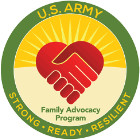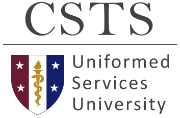How does this new change affect what we do?
Change our Thinking. Assessment and management of reports of cases of problematic sexual behavior between children and youth (PSB-CY) require us to change our thinking from the traditional Family Advocacy Program (FAP) model of domestic violence and child abuse and neglect to new thinking that describes the behavior of the child or children involved. FAP thinking needs to expand to include getting to know our new partners in the multidisciplinary team (MDT) response to PSB-CY. With this shift in processes there is an increased need to coordinate a comprehensive, multidisciplinary, and trauma-informed response to the needs of children, youth, and families involved in incidents of PSB-CY.
Change our Language. Exhibitor is the term for the child who has reported to have engaged in PSB-CY. Impacted is the term for the child or children involved in the reported incident(s). The terms victim and abuser (or offender) are not used in PSB-CY.
Change our Assessment. We must be aware of the multiple processes in assessment and follow-on actions such as referrals for treatment or other outcomes. There are major changes in how the FAP conducts its operations to address PSB-CY. In the traditional FAP model, decisions about an incident of domestic violence or child abuse/neglect are made by an Incident Determination Committee (IDC) for entry into the Service FAP Central Registry. PSB-CY incidents are managed through the PSB-CY MDT to coordinate a trauma-informed and developmentally appropriate response to the referral.
When an incident of PSB-CY is reported, the supervisor of the reporting authority (e.g., the DoD Educational Activity [DoDEA], and the Child Development/Youth Programs [CD/YP]) will determine if the reported incident requires a referral to the FAP. Select personnel from the referring authority will use the Non-Clinical Referral Tool (NCRT, DD form 3179 [see also here]) to categorize the behavior of the child reported to have exhibited and the child or children impacted by PSB/impacted child and determine if a referral to FAP is required (click here for more information about the NCRT). Reports can also be submitted by people outside the DoDEA and CD/YP directly to FAP, in which case the FAP will use the NCRT with input from the referral source. If the incident is problematic, the MDT is engaged to conduct follow-on actions for the child exhibiting PSB, children impacted by PSB, the families, and the community (click here for more information on the MDT). It is important to remember that all sexual behavior that is observed by CD/YP is not automatically PSB. PSB-CY can only be determined after the NCRT is completed.



